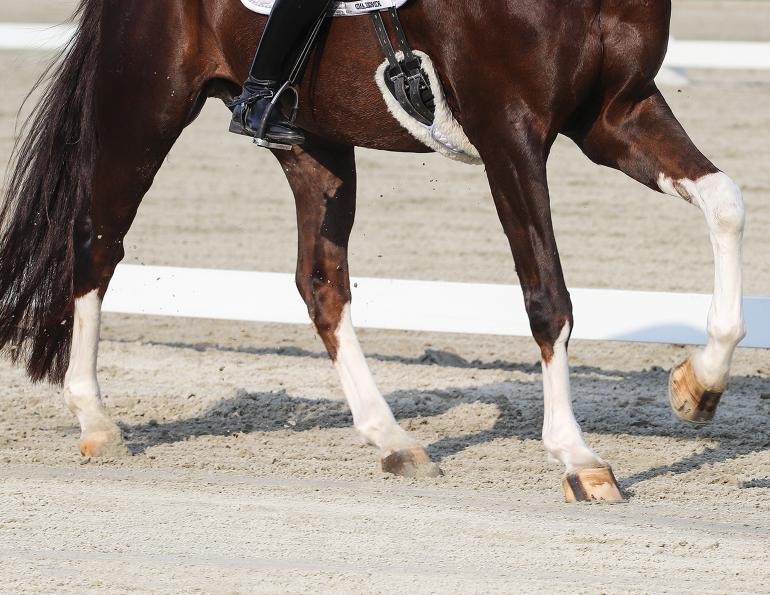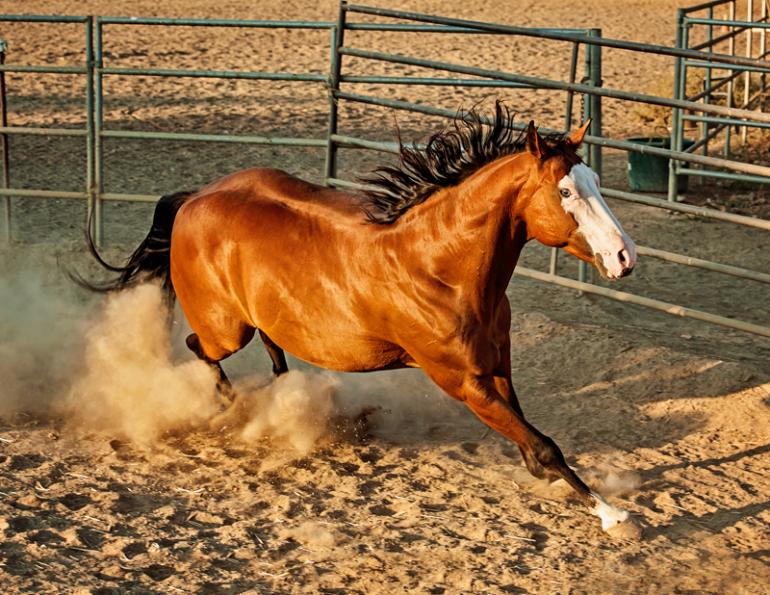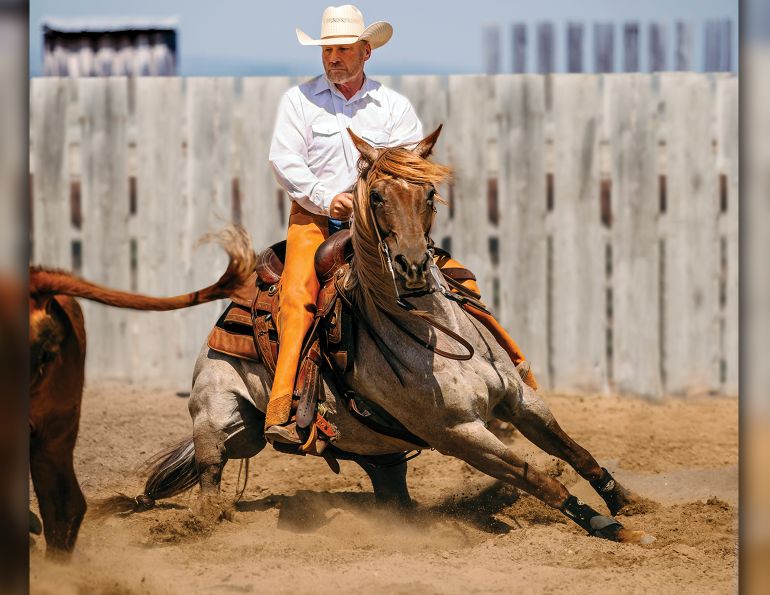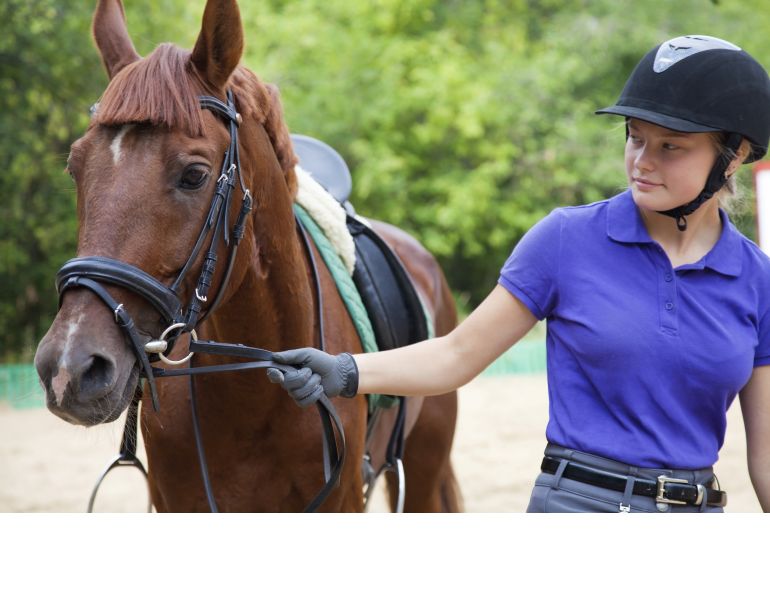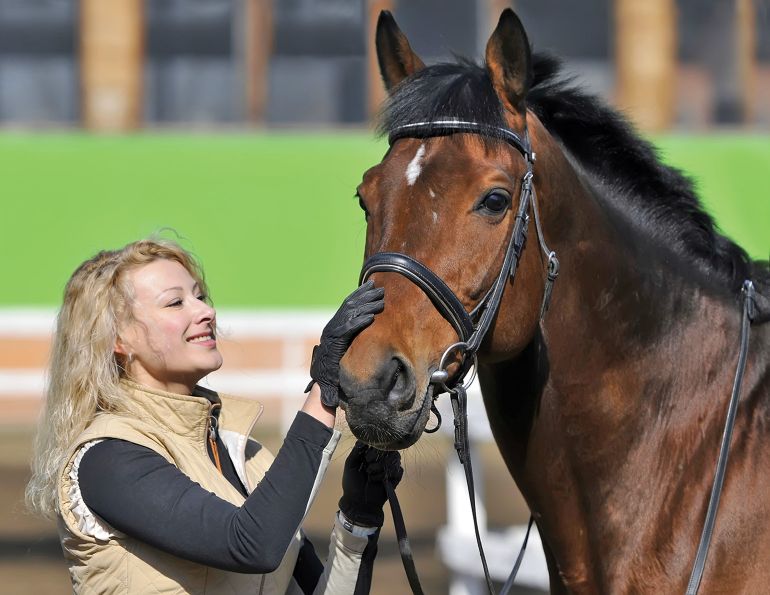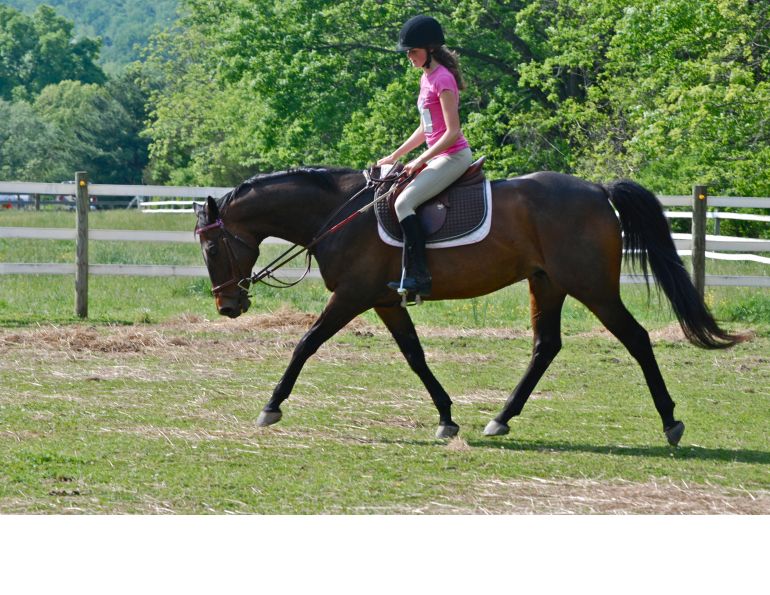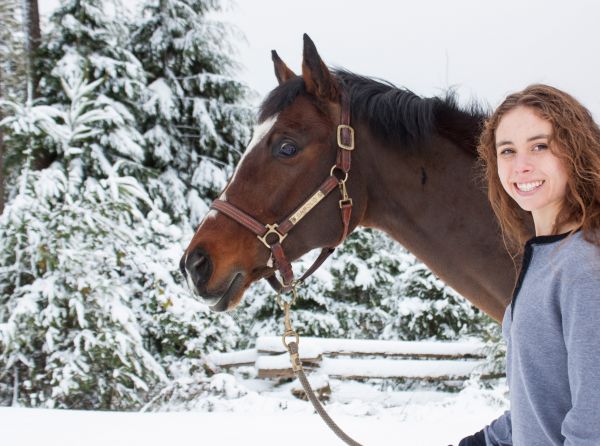By Lindsay Grice, Equestrian Canada coach and judge
Wrong lead, reposition, relaunch. It’s the two-strides-forward, one-stride-back process of learning leads for riders and their horses.
Fast forward a year down the road to see the same rider who once dreaded hearing “Wrong lead!” from her coach now initiating the wrong lead …on purpose. Why? She’s discovered the counter-canter as an essential tool in building a solid training foundation for her horse.
What’s the point of counter-cantering? Here are five:
- Rider education. In years of coaching, I’ve seen it over and over - once a rider gets the hang of the counter-canter, a light bulb goes on. They graduate from elementary to high school in their grasp of leads and balance. You will too. It’s a huge step toward developing that elusive horseman’s term – feel. It’s the ability to distinguish one lead from another without looking; an awareness for not only what feels right, but what feels wrong. By mastering the counter-canter, you’ll become a whiz at controlling your horse’s hips and shoulders independently.
- Horse education. Many horses are taught leads in relation to direction of travel – routinely picking up the inside lead as they travel around the rail. Instead, I want the horses I ride to know their leads in relation to the way I position their bodies. I should be able to strike off on either lead, on a straight or curved line, anywhere in the arena’s geometry. The counter-canter is a nifty balancing exercise; the horse learns, after a few sessions of awkwardness, to develop straightness, coordination, and self-carriage. Counter-canter is a logical, lower-stress step for your horse in his flying change education than defaulting to an abrupt change of direction to teach a lead change.
- Preparation for the show ring. Counter-canter is often asked for in a pattern or test.
- Avoid score sheet penalties. Whatever your riding discipline, a wrong lead is a big misstep. Under American Quarter Horse Association (AQHA) rules, for instance, merely one or two strides on the wrong lead will cost you a major five-point deduction in Horsemanship or Equitation. Another five-point penalty is assigned for noticeably looking down to check your lead. In Trail, Western Riding, and Ranch Riding classes, even a “hiccup” onto the wrong lead is a three-point penalty.
- Warm-up ring navigation. When my horse is balanced and confident whether on the inside or outside lead, I’m not depending on the direction of travel to practice cantering on my lead of choice at a show. I can cruise around on the counter lead, if necessary, without interrupting the traffic flow and inconveniencing other riders.
Related: Nail the Correct Counter Lead
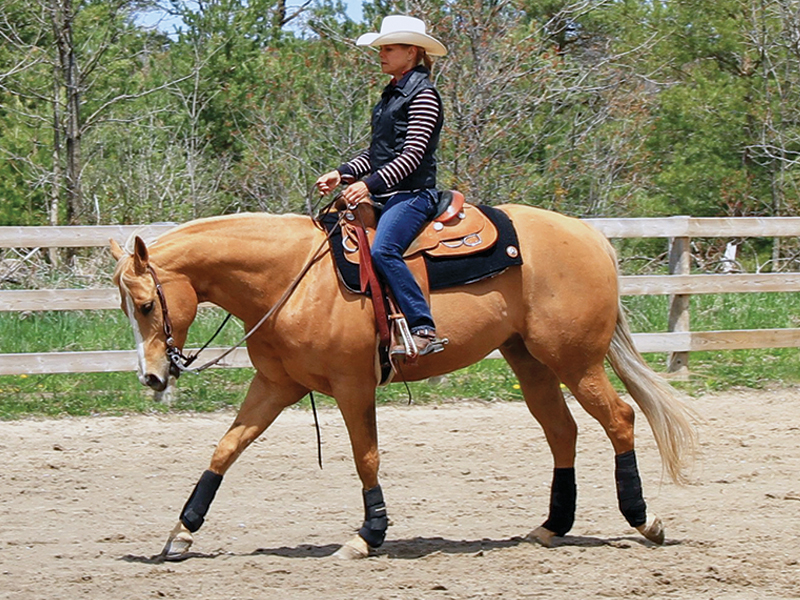
Above: Guiding my horse around the circle on the right (counter) lead. The horse is straight and balanced. I maintain the right lead with my left leg behind the girth.
Below: I’m demonstrating how steering with the rein around a counter-canter circle (neck-reining here) allows the horse’s body to bulge off-track to the outside. Even his eye is bulging to the outside!

Photos courtesy of Lindsay Grice
How to do it:
- Know your leads. Are you getting the correct lead — anytime, anywhere? Does your horse strike off on the lead you ask for, on whatever line you point him, not just on the rail?
- Establish independent control of the hips and shoulders before tackling the counter-canter. Turns on the forehand and haunches, shoulder–in, and haunches-in are the phonics for building the language of counter-canter.
- Position your aids clearly. For the left lead I’ll position my left leg clearly at the girth, and my right leg behind the girth. I’m careful to make a distinction of at least six inches between these two cue locations, and accordingly, between the horse’s body parts I want to move. I’ll ask for slight flexion of the horse’s nose toward the lead — left lead, slight left flexion.
- Keep your horse straight. Establish the outside lead on a straight line for a few strides before attempting your first counter-turn. We’re inclined to pull on the inside rein to steer the horse around a circle. Doing so at the counter-canter allows the horse’s body to bulge off the track of the circle to the outside. The result? The horse trots to change leads. On the left counter lead, keep your horse’s body straight with a direct outside (left) rein and squeeze on the rein so your horse flexes his head ever-so-slightly toward the lead. Direct your horse’s shoulders around the circle with your outside (left) leg at the girth. If necessary, an inside (right) opening rein helps to guide.
- Think geometrically. Instead of a circle, I picture cantering the horse around an octagon shape, comprised of little mini turns. As the horse responds to each little turn cue, I relax my aids briefly to give him a yes. Initially, your horse is likely to be flustered about being asked to lope around on the “wrong lead.” It’s beautiful how a well-timed release after every little turn reassures the horse that he got the right answer. It’s my way of communicating: Yes, I really do want you on the wrong lead — you haven’t made a mistake. For example, traveling around the arena, begin a left lead counter-canter a couple of metres from the track. This will help if your horse is inclined to assume: I typically pick up the right lead when the fence is on my left. Go straight for several strides, then open your right rein while keeping your left rein straight, and press with your left leg to angle the next stride slightly to the right. Release after that little turn and canter straight for another three or four strides before asking for another turn.
- Start small. Don’t wait for a mistake. After just two or three successful little counter-canter turns, walk and let your horse process. When you feel any tension or inclination to switch to the true lead, confirm the lead proactively before he breaks stride. You’ll sense confusion when your horse starts to get tense and hoppy, thinking about changing leads. Press in with your leg behind the girth. Pulse your rein, keeping his attention on task and asking for flexion toward the lead. Wait until he settles… and walk. Remember — the best way to avoid unwanted responses is never to let them be expressed in the first place.
Related: How to Optimize Your Horse Schooling Sessions
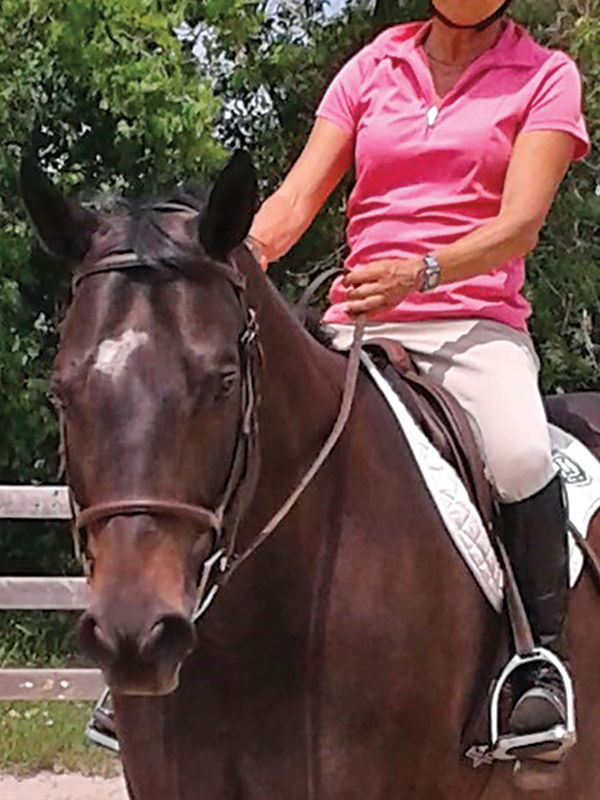
Above: On the left counter lead my left hand asks for slight flexion toward the lead (in this case, to the outside). My left leg is shifted forward to direct the shoulders around the circle. Aids can become more subtle as your horse gets the hang of counter-canter.
Below: My right leg is distinctly behind the girth to maintain a left lead counter-canter. This leg would be on the inside of the circle for counter-canter. Position correction: I’ve allowed my right side to collapse at my waistline.
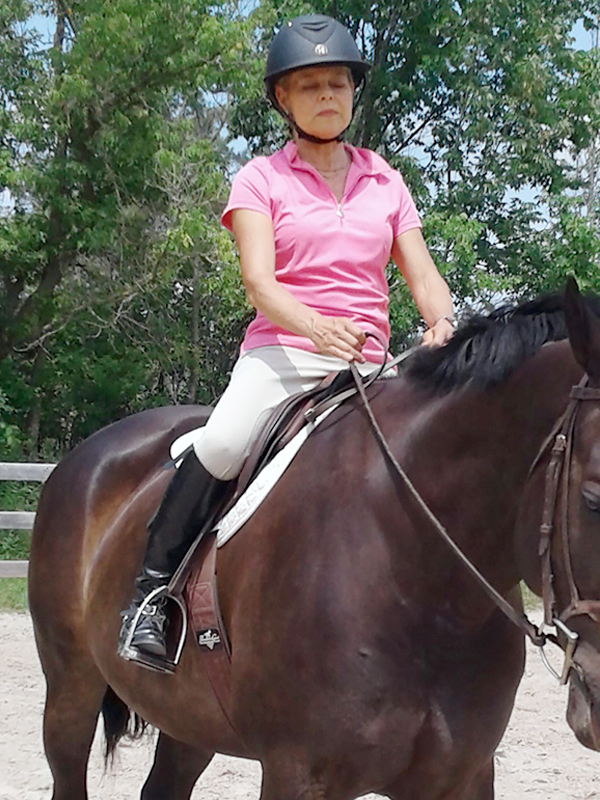
Photos courtesy of Lindsay Grice
Counter-canter was requested in an equitation class at a recent horse show. Some riders looked a bit tense. Others just blustered right into it as if thinking: What have I got to lose? Those who had done their homework struck off on the outside lead and maintained that counter lead in a picture of calm and balance.
Why bother with counter-canter? It may seem counter-intuitive to practice the wrong lead. It’s certainly unnatural for your horse. For those of us who, in grade nine algebra class, asked, How will I ever use this in real life? we eventually saw, in the rearview mirror, that every fragment of learning pieces together to build more complex skills. Counter-canter is one of those pieces.
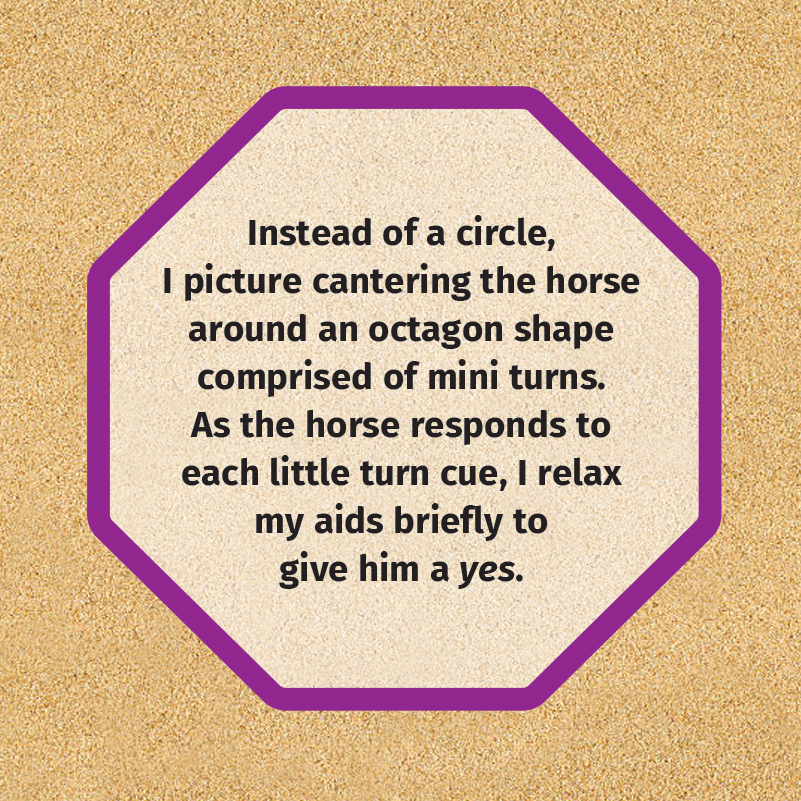
Related: The Benefits of Cantering Your Horse
To read more by Lindsay Grice on this site, click here.
Main Photo: AdobeStock/Claudia



